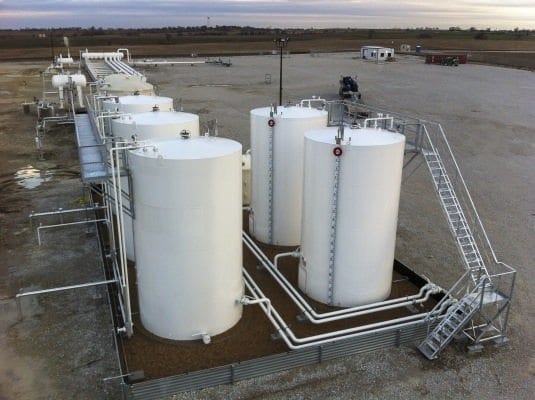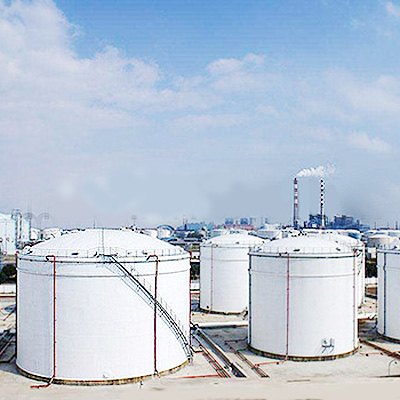How API 650 Welding Inspection Helps Eliminate Defects and Ensures Durability
Wiki Article
All Concerning Welding Examination: Trick Conveniences for Your Tasks
Welding assessment plays a crucial duty in the building and manufacturing industries. It guarantees that bonded joints fulfill high quality and security requirements. By determining problems early, projects can stay clear of monetary losses and considerable delays. Complying with sector standards not just protects the integrity of the end product but additionally builds trust fund among stakeholders. Recognizing the subtleties of this procedure discloses additional benefits that can impact job end results substantially. What are these advantages?Comprehending the Welding Assessment Process
Although welding is an important part in various sectors, the assessment procedure is vital to ensure high quality and security. This process entails a series of methodical analyses developed to recognize any prospective concerns that might compromise the stability of bonded joints. Examiners evaluate welding treatments and credentials to confirm compliance with market criteria.Following this, aesthetic evaluations are carried out to examine the total look and finish of welds. Non-destructive testing methods, such as radiographic or ultrasonic screening, might additionally be used to spot interior problems without harming the product. Documents plays a crucial role, as it provides a record of evaluations and findings, verifying traceability and responsibility.
Eventually, comprehending the welding assessment procedure promotes confidence in the high quality of the completed product, decreases the risk of failures, and enhances total task success in numerous applications, from building and construction to production. API 650 Welding Inspection.
Usual Kinds of Welding Issues
Welding issues can substantially influence the honesty and efficiency of bonded frameworks, as they might cause failures under tension or unfavorable conditions. Usual kinds of welding flaws include cracks, porosity, incomplete combination, and slag incorporation. Splits can create due to thermal tensions or improper air conditioning, jeopardizing the joint's strength. Porosity describes the existence of gas bubbles trapped in the weld, which can damage the joint and minimize ductility. Incomplete blend happens when the weld metal does not effectively bond with the base material, causing weak points. Slag inclusion takes place when non-metallic contaminations come to be trapped within the weld, bring about a reduction in architectural stability. Recognizing these flaws early through assessment is vital for keeping top quality and ensuring safety and security in welded frameworks. Understanding these usual problems enables enhanced welding strategies and improved task results.Relevance of Compliance With Sector Criteria
Conformity with industry criteria is vital for maintaining structural honesty in welding jobs. Sticking to these requirements not just alleviates obligation threats yet also boosts the general top quality of the ended up work. This positioning fosters trust fund among stakeholders and warranties that projects satisfy both security and performance assumptions.Making Sure Architectural Stability
Assuring architectural honesty is paramount in any kind of building or manufacturing task, as adherence to industry criteria functions as a foundation for security and reliability. Compliance with these criteria guarantees that welding processes fulfill extensive requirements, which is vital for the sturdiness of frameworks. Normal welding inspections confirm that products and techniques straighten with developed standards, protecting against possible failings that might jeopardize stability. Furthermore, complying with market requirements promotes consistency in quality, which is important for preserving public count on building methods. By focusing on structural stability with persistent adherence to standards, organizations can enhance the total efficiency of their jobs, causing much safer atmospheres and long term possession lifespans. Inevitably, this commitment mirrors a positive method to quality guarantee in welding methods.Reducing Responsibility Dangers
Following sector requirements considerably minimizes obligation risks connected with welding jobs. Conformity with developed guidelines assurances that welds meet safety and security and performance standards, decreasing the chance of failures that can lead to accidents or lawsuits. This proactive technique not only shields the workforce yet also safeguards the economic interests of the business. Ineffective methods or poor inspections can cause costly repair services, lawful conflicts, and damages to credibility. By applying extensive welding examinations, business show their dedication to high quality and safety, eventually decreasing exposure to possible claims. Furthermore, adherence to regulations strengthens trust amongst customers and stakeholders, as it shows a commitment to maintaining high requirements throughout the project lifecycle. Reducing responsibility threats is crucial for long-lasting organization sustainability.Enhancing Project High Quality
Strenuous welding inspections not only mitigate liability risks yet additionally play a crucial duty in improving general project quality. By sticking to sector criteria, these assessments ensure that welds meet defined standards for toughness, security, and strength. Compliance with developed standards helps recognize problems early, lowering the probability of costly rework or task delays. Consistent high quality control fosters depend on amongst stakeholders, including customers and regulatory bodies, which can lead to duplicate business and positive references. Ultimately, a dedication to premium welding techniques not only boosts the integrity of the final item yet also maintains the reputation of the organization entailed. Consequently, extensive examinations serve as a foundation for sustainable and successful task end results.
browse this site
Benefits of Very Early Detection of Concerns
Early discovery of welding concerns offers substantial benefits, specifically regarding cost savings on repair work. By determining issues before they intensify, organizations can enhance the structural integrity of their projects. This proactive approach not only minimizes financial expenses yet additionally advertises safety and dependability in welded structures.
Cost Savings on Repairs
Discovering welding problems quickly can result in significant cost financial savings on fixings. Early recognition of problems permits targeted interventions, decreasing the level of damage and avoiding costly, considerable repair services in the future. When problems are resolved throughout the preliminary phases of a task, resources are utilized extra effectively, reducing both labor and product expenses. Additionally, prompt evaluations can prevent task delays, which frequently sustain extra expenditures. By remedying issues early, firms can avoid the economic problem associated with rework, service warranty insurance claims, and prospective safety dangers. Ultimately, purchasing positive welding evaluations fosters a much more affordable approach to task management, making certain that budget plans continue to be intact while maintaining the high quality and reliability of the end product.Improved Structural Honesty
Ensuring the architectural integrity of bonded parts depends upon the timely identification of possible issues. Early detection throughout the welding evaluation procedure enables the immediate rectification of problems such as splits, voids, or incorrect combination. Addressing these issues immediately not just enhances the strength and longevity of the weld but likewise alleviates the threat of catastrophic failures during the service life of the framework. Normal examinations contribute to a more reputable evaluation of weld quality, guaranteeing compliance with market requirements. By focusing on welding assessments, task supervisors can keep a greater degree of safety and security and efficiency, inevitably bring about effective task end results. Boosted architectural stability shows the dedication to high quality and adherence to finest methods in welding.Cost-Effectiveness of Welding Inspections
While numerous business may view welding inspections as an additional expenditure, they often prove to be an economical financial investment over time. By determining problems early, these evaluations can avoid expensive repair work or replacements that might emerge from unseen concerns. This positive method not only conserves cash but also decreases task delays, guaranteeing that timelines are stuck to.
Top quality welding inspections add to improved performance, leading to fewer rework circumstances and enhanced performance. The reduction in product waste and labor costs connected with redoing damaged welds includes in the financial advantages.
Buying detailed inspections likewise improves the overall high quality of the end product, which can result in boosted consumer satisfaction and repeat service. Ultimately, the preliminary prices related to welding examinations are typically surpassed by the long-term cost savings and benefits they offer, making them a smart option for any kind of welding task.
Enhancing Safety and Reliability in Welding Projects

Welding evaluations play a vital function in enhancing safety and reliability within welding tasks, as they methodically determine potential hazards and weak points in welds. By using qualified inspectors, companies can assure that welding processes comply with industry criteria and regulative requirements. This proactive strategy lessens the danger of weld failures, which can bring about crashes, costly repair work, and project hold-ups.
Assessments give vital paperwork that proves conformity and quality guarantee, fostering count on between stakeholders. Normal evaluations during numerous project stages enable the prompt detection of concerns, enabling rehabilitative actions prior to they rise. In addition, the understandings obtained from inspections add to continual enhancement in welding methods, improving general project results. Ultimately, robust webpage welding inspection procedures not only shield workers yet also protect investments, ensuring that projects are completed efficiently and fulfill the highest safety and reliability requirements.
Frequently Asked Questions
What Qualifications Should a Welding Examiner Have?
A welding assessor should have pertinent certifications, such as Certified Welding Assessor (CWI), together with substantial knowledge of welding processes, materials, and codes. API 650 Welding Inspection. Experience in the field and solid logical abilities are likewise necessary for efficient examinationsHow Often Should Welding Inspections Be Performed?
Welding inspections need to be conducted on a regular basis, usually previously, throughout, and after the welding process. The frequency may depend that site on task specifications, governing demands, and the complexity of the welds to ensure structural integrity and safety and security.Can Welding Inspections Be Executed Remotely?
Welding evaluations can certainly be done remotely, utilizing sophisticated modern technologies such as drones, video cameras, and ultrasonic screening tools - API 650 Welding Inspection. This technique permits reliable monitoring while reducing the demand for physical visibility at the siteWhat Tools Are Utilized in Welding Inspections?
Welding assessments utilize various devices, consisting of ultrasonic testers, magnetic fragment testers, aesthetic inspection tools, radiographic tools, and calipers. Each tool serves a specific purpose to assure weld stability, high quality, and conformity with market standards.How Do I Pick a Welding Evaluation Solution?

To pick a welding assessment service, one must evaluate credentials, experience, and accreditations. In addition, reviewing client reviews and requesting in-depth solution descriptions can assist assure the chosen solution meets specific job requirements effectively.
By focusing on welding inspections, project supervisors can keep a higher level of safety and security and efficiency, eventually leading to successful task end results. Welding inspections play a necessary function in improving security and integrity within welding projects, as they methodically recognize potential threats and weaknesses in welds. A welding examiner should have appropriate accreditations, such as Licensed Welding Inspector (CWI), along with considerable understanding of welding procedures, codes, and products. Welding inspections ought to be performed routinely, usually in the past, throughout, and after the welding process. Welding examinations make use of various tools, including ultrasonic testers, magnetic bit testers, aesthetic evaluation tools, radiographic equipment, and calipers.
Report this wiki page